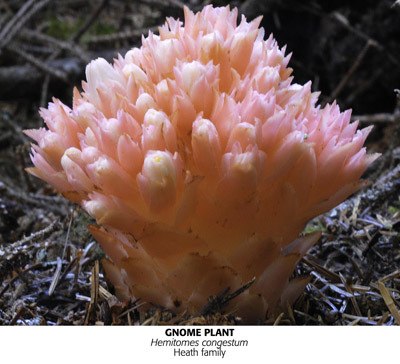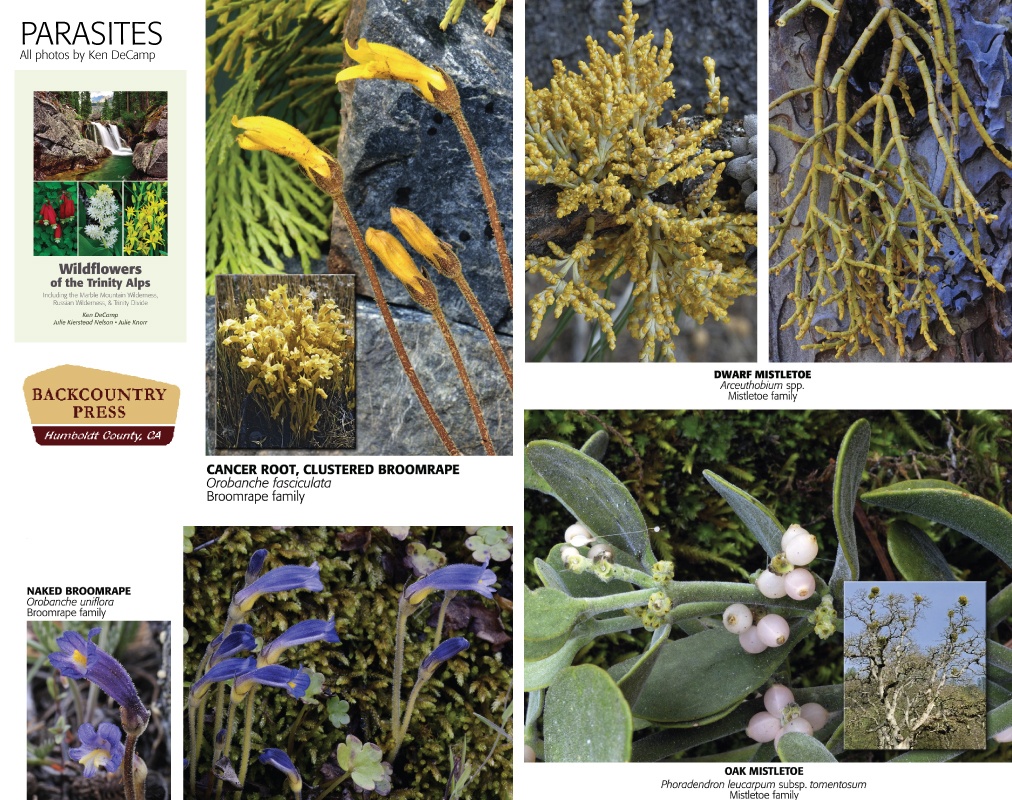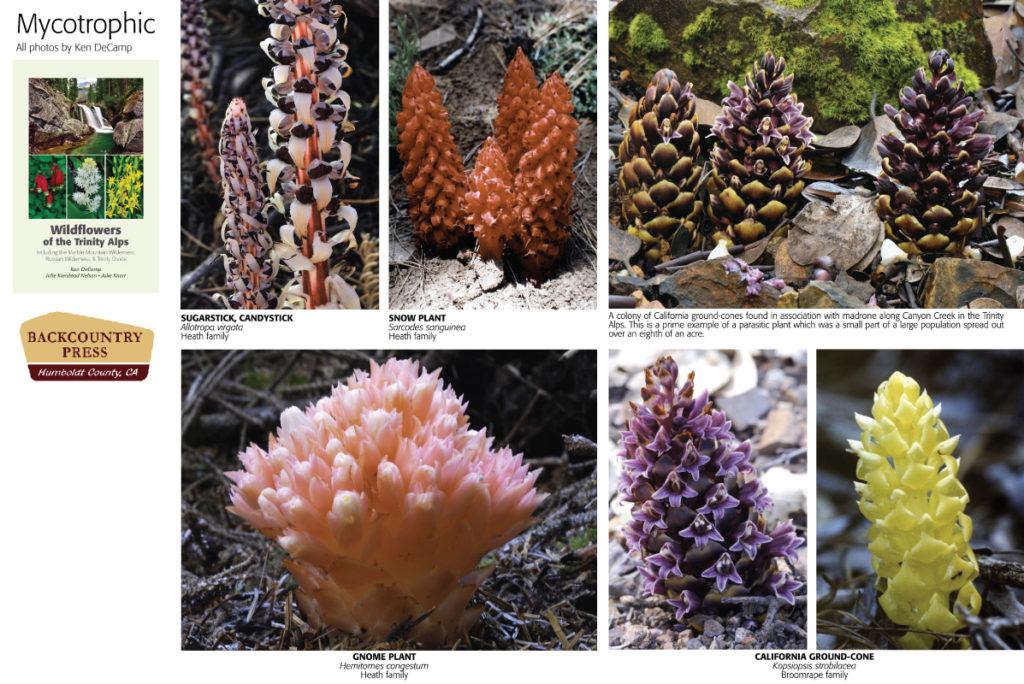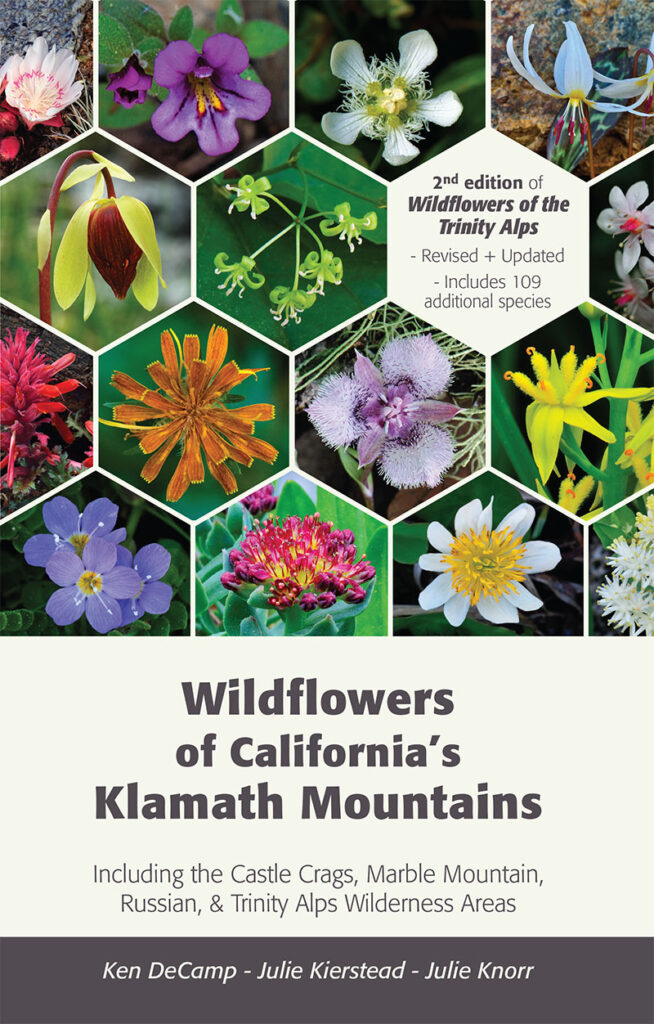Parasites and Mycotrophs of the Klamath Mountains
Green plants are considered autotrophs because they photosynthesize—making sugar from water and carbon dioxide. The world of heterotrophic plants is complicated but all have moved away from total energy production from photosynthesis toward obtaining organic carbon either directly from other living beings or through a parasitic relationship with a fungus. Heterotrophic plants include directly parasitic and mycotrophic forms. The conifer forests of the western United States nurture an exceptional diversity of heterotrophic plants and the Klamath Mountains may have the most heterotrophic plants in the western United States!
Parasitic plants
include ground-cones and broomrapes. These species contain no chlorophyll and obtain all nutrients by directly tapping the root system of host plants. Dwarf mistletoes (Arceuthobium spp.) are also parasitic. The oak mistletoes (Phoradendron spp.) are hemiparasites. These species obtain water and some nutrients from its host tree, but also photosynthesize.
Mycotrophic plants
Are represented in our area by species in the heath (Ericaceae), orchid (Orchidaceae), and broomrape (Orobanchaceae) families. These plants all obtain nutrients through an intermediary mycorrhizal fungi. Mycorrhizal relationships between fungi and plant are symbiotic, in that the fungi expands the root surface area and increases nutrient and water absorption for the plant while the fungi gets nutrients in return. Mychotrophs exploit this symbiosis by parasitizing the hyphae and the fungi unwittingly feeds the mycotroph. Some species in the heath family have both leafless (heterotrophic) and leaf-bearing (autotrophic) forms.
Insectivorous plants
Photosynthesize but need an energy boost. They obtain this by trapping insects and digesting their nutrients. Species like Darlingtonia californica survive on nutrient poor serpentine soils buy supplementing nutrients in this way.
Resources:
This post features excerpts from the book:




I enjoyed and learned from the section on Heterotrophic plants – thanks for that.
Hallo from Scotland!
For those of us who live far away from California, would you consider publishing a book or booklet on the . . . vegetation types/ecological zones/biomes/landscapes . . . of the state so that we can slot your web site information on books and species into an ecological mind’s-eye picture?
We have heard a lot about the recent large-scale fires in California and some of us wonder what causes them? Is there any evidence that human alterations to landscape ecology (past or present) contribute to the fires?
Thanks,
Yours sincerely,
Ruth Tittensor
Hi Ruth- Good to hear from you. I was a co-author on a book about California’s Landscapes and I highly recommend the book!
https://store.cnps.org/collections/books/products/californias-botanical-landscapes
As to fire…I’ll look around and let you know what I find.
Cheers, Michael
Dear Michael,
Thanks for your reply and information about the book on California vegetation. It will go on my wish list . . . !
I look forward to anything you discover about potential anthropogenic causes of the very bad fires in California. BC (Canada) has had huge forest fires in recent years, so I’ll follow that up and see if any research has been carried out.
Happy Christmas and a Fulfilling and Prosperous 2018!
Ruth
PS There is a blog post/article of mine on the web site of Casemate Academic publishers (USA) about Sitka spruce and – well read it!